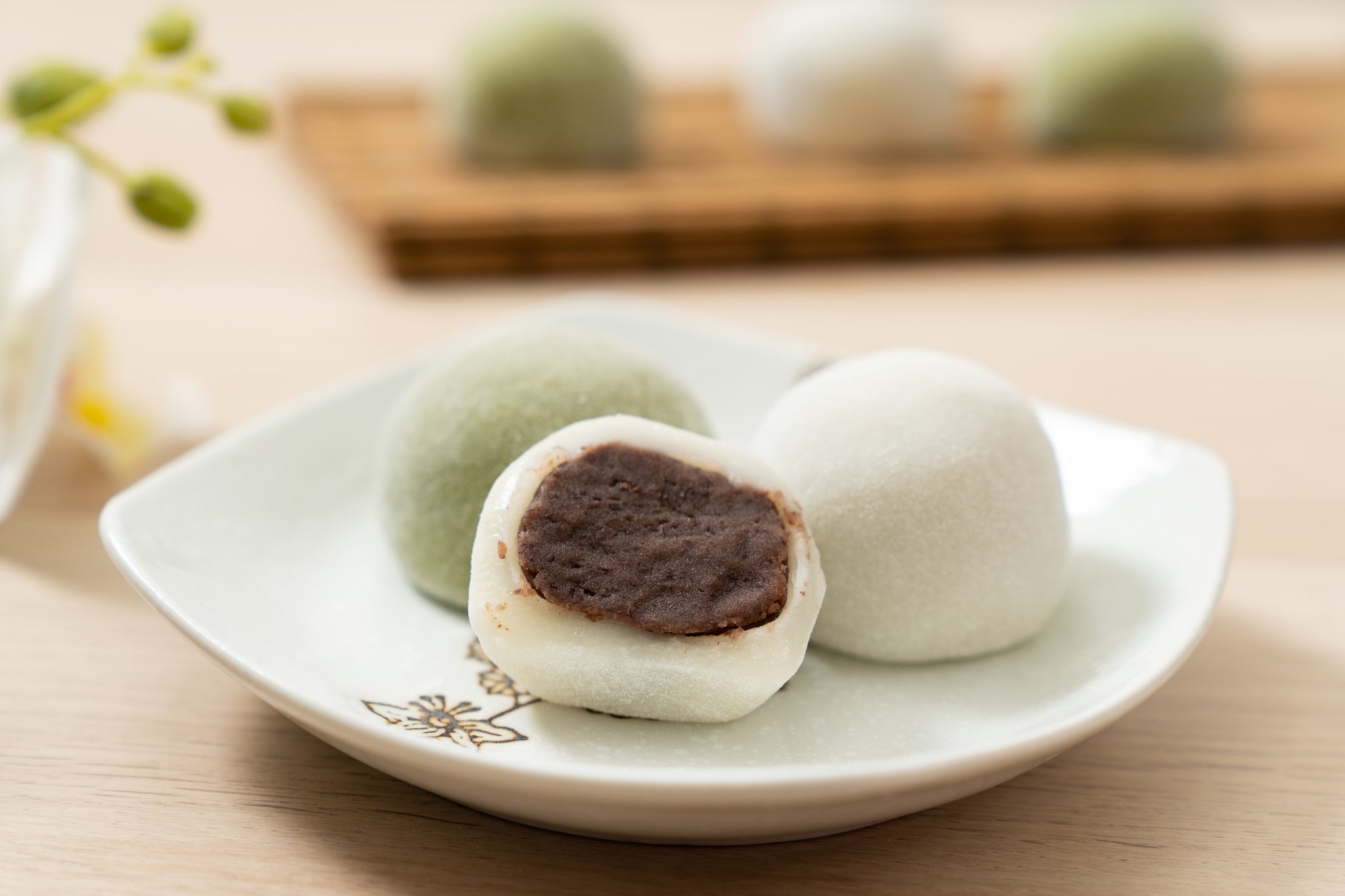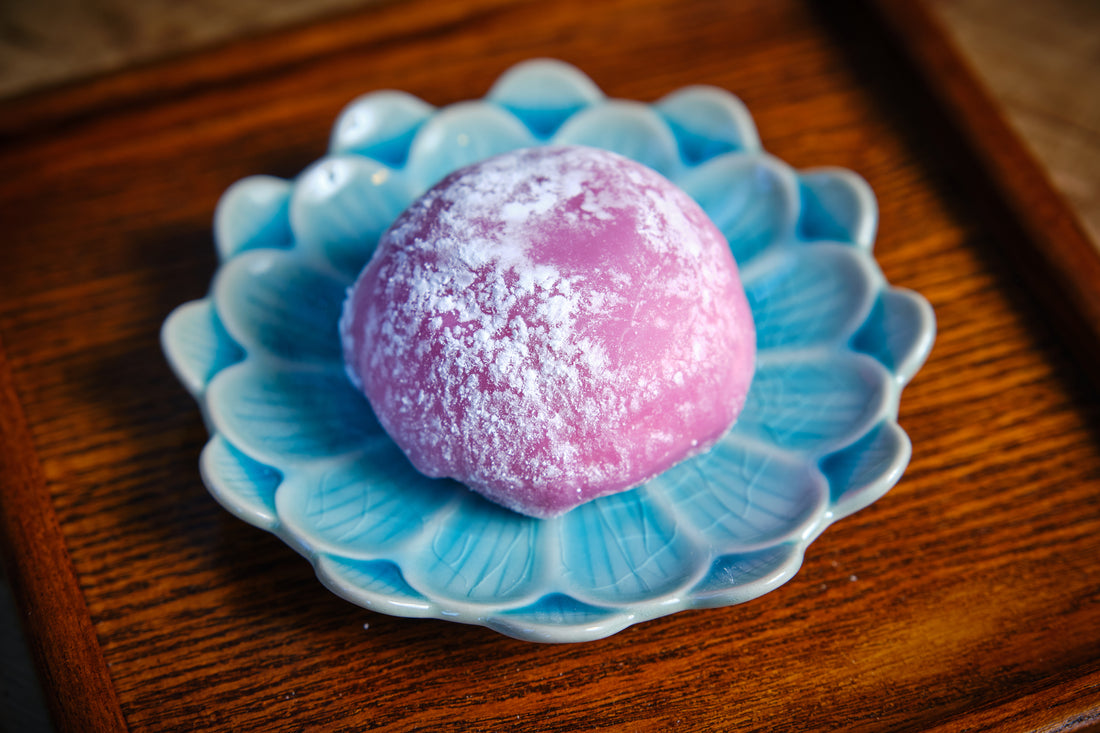Japan boasts a diverse array of traditional sweets, each representing a facet of the country's rich cultural tapestry. While many of these sweets tantalize the palate with their unique flavors and textures, not all are deemed suitable for the time-honored tea ceremony. The essence of the tea ceremony is steeped in simplicity, mindfulness, and harmony, and the accompanying sweet treats are chosen with these principles in mind. The flavor of the sweets should not be overpowering or dominate the taste of the tea but rather complement it. It's a delicate balance, ensuring that the nuances of the tea remain at the forefront while the sweet provides a harmonious counterpoint.
Japan, a nation known for its rich history, culture, and tradition, boasts a culinary landscape that's as diverse as it is delicious. While the world might be familiar with sushi, tempura, and ramen, there's a sweet side to Japanese cuisine that often goes unnoticed. Today, we delve deep into the world of mochi, a quintessential Japanese sweet treat that comes in a plethora of delightful variations.
1. Sakura Mochi
Celebrating the blooming of cherry blossoms, sakura mochi is a pink-colored mochi filled with sweet red bean paste and wrapped in a pickled cherry leaf. The contrast between the sweet mochi and the salty leaf creates a unique taste sensation.

2. Warabi Mochi
A slightly different kind of mochi, warabi mochi is made from bracken starch instead of rice. This results in a more jelly-like consistency. Often coated with kinako (roasted soybean flour), it offers a delightfully chewy texture and a nutty flavor.
3. Kusamochi
Distinctive for its green color, kusamochi gets its hue from the yomogi (mugwort) plant. The mochi itself can be filled with sweet red bean paste, making it both visually striking and delectable.

4. Hanabira Mochi
Traditionally eaten during the New Year's celebration, hanabira mochi has a distinct appearance resembling a flower petal. This mochi has a white outer layer and a pink layer inside, typically filled with sweet white bean paste and a strip of candied burdock root. It is very common during Hatsugama tea ceremony.

5. Hishi Mochi
This is a colorful layered mochi often associated with Hinamatsuri, the Japanese Doll Festival. It usually features three layers - pink, white, and green - each symbolizing different elements of life and nature.

6. Kirimochi
These are dried, solid blocks of mochi rice. Often used in various dishes, they can be grilled, baked, or added to soups, where they expand and become soft and chewy.
7. Botamochi
A sweet treat primarily enjoyed during the spring, botamochi features a ball of rice covered with a layer of sweet red bean paste. It is similar to another sweet called ohagi, which is eaten during the autumn.

8. Kuzumochi
Made from kudzu vine starch (type of arrowroot), kuzumochi boasts a gelatinous texture and is often enjoyed in the summer. It’s typically served chilled with a sprinkle of kinako and a drizzle of kuromitsu (a sweet black sugar syrup).

There is also another version, more similar to other types of mochi. Red bean paste is covered in kuzu.

9. Daifuku Mochi
Perhaps one of the most famous types, daifuku mochi is a soft and pillowy mochi filled with various ingredients, the most common being sweet red bean paste.

Modern variations include fillings like ice cream or fruit. Such type of daifuku mochi is not used during the tea ceremony.

10. Yaki Mochi
As the name suggests, yaki mochi is grilled mochi. When grilled, the outer layer becomes crisp while the inside remains soft and gooey, often enjoyed with soy sauce or wrapped in seaweed.

11. Kagami Mochi
A traditional decorative mochi used for New Year celebrations in Japan. It consists of two round mochi cakes, with the smaller one placed atop the larger one, often garnished with an orange.


12. Mizu Shingen Mochi
Also known as "water cake", this is a unique and almost transparent mochi that looks like a drop of water. It's made from a specific plant-derived gelatin and served with kinako and kuromitsu. Its delicate nature means it holds its shape for only a short time before dissolving.

13. Kashiwa Mochi
Another iconic delicacy in the wide spectrum of Japanese mochi is the kashiwa mochi. Traditionally eaten on Children's Day, which is celebrated on the 5th of May, kashiwa mochi is a soft, glutinous rice cake filled with sweet red bean paste and wrapped in an oak leaf. The oak leaf isn't meant for consumption but imparts a subtle fragrance to the mochi. The symbolism behind using the oak leaf is poignant; just as the oak tree retains its dried leaves until new ones sprout, the wrapping signifies parents' wish for their children to continue the family lineage. It is very commonly served during the tea ceremony.

14. Oshiruko Zenzai
Delving deeper into Japan's sweet repertoire, Oshiruko Zenzai stands out as a heartwarming dessert, especially cherished during colder months. Essentially, it's a sweet red bean soup that typically features mochi, either as whole rice cakes or smaller, torn pieces. Made from azuki beans that are slowly simmered and sweetened, the resulting soup has a thick, almost porridge-like consistency. The chewy mochi adds a delightful texture contrast to the creamy soup. Often enjoyed with a side of pickled vegetables to cleanse the palate, Oshiruko Zenzai is a testament to the Japanese art of balancing flavors and textures, presenting comfort in a bowl.

15. Sanshoku Dango
Sanshoku Dango is a delightful representation of Japan's affinity for aesthetics in food. Translated as "three-colored dango," Sanshoku Dango features three balls of mochi on a skewer, each dyed with a different hue — typically pink, white, and green. Each color is not just visually appealing but carries seasonal or cultural significance. The pink signifies the blossoms of spring, the white represents the snow of winter, and the green denotes the verdant shades of summer. Often enjoyed during festive occasions or simply as a treat during hanami (cherry blossom viewing), Sanshoku Dango offers a chewy texture coupled with a gentle sweetness, making it a beloved treat among many.

16. Mitarashi Dango
A savory-sweet treat that stands out amidst Japan's plethora of confections is the delectable Mitarashi Dango. These skewered rice dumplings are bathed in a glossy syrup made from soy sauce, sugar, and starch. The name originates from the Mitarashi Shrine in Kyoto, where the dango was first offered. The caramelized glaze imparts a rich, umami flavor, which contrasts beautifully with the neutral taste of the chewy mochi balls. When grilled, the exterior acquires a slightly crisp texture, adding another layer of depth to the dango's overall mouthfeel. As a snack that marries the savory with the sweet, Mitarashi Dango has garnered a devoted following both in Japan and worldwide.


17. Isobeyaki
Navigating through Japan's diverse mochi landscape, one encounters Isobeyaki, a rustic and comforting variation. Isobeyaki starts with kirimochi, or plain rectangular rice cakes, which are grilled until they develop a crispy exterior and a gooey, stretchy interior. Once grilled to perfection, these mochi cakes are then quickly brushed with a coat of soy sauce, providing a savory touch, and immediately wrapped in a sheet of nori (seaweed). The result is a harmonious blend of flavors — the saltiness of the soy sauce, the oceanic hint of the nori, and the inherent sweetness of mochi. Often enjoyed as a warming snack, especially in winter, Isobeyaki exemplifies the beauty of simplicity in traditional Japanese cuisine.

18. Kudzuzakura
Among the intricate web of Japanese desserts, Kudzuzakura stands out for its ethereal and delicate nature. This dessert is essentially a blend of the velvety smoothness of kudzu (Japanese arrowroot) jelly and the deep, rich flavor of sweet red bean paste. Resembling the iconic cherry blossoms of Japan, Kudzuzakura typically showcases a cherry blossom flower preserved in salt within its translucent jelly, creating an experience that's as much a visual delight as it is a gastronomic one. The mild, refreshing texture of the kudzu jelly perfectly offsets the sweet density of the red bean paste, culminating in a dessert that's both elegant and evocative of Japanese aesthetics.
19. Kinako Mochi
Kinako Mochi introduces a nutty and aromatic experience. Made by toasting and grinding soybeans into a fine powder, kinako, with its golden hue and roasted aroma, is generously sprinkled over grilled or warmed mochi. The warmth of the mochi causes the kinako to slightly meld, creating a delightful contrast between the chewy texture of the mochi and the powdery kinako. This mochi variant also often gets a drizzle of kuromitsu, a sweet and dark syrup made from black sugar, further enhancing its flavor profile. Kinako Mochi is a celebration of simplicity, where each element shines without overshadowing the others, epitomizing the refined subtleties of Japanese desserts.

20. Yatsuhashi
Venturing into the historical city of Kyoto brings one face-to-face with the iconic Yatsuhashi, a sweet treat deeply rooted in the region's culinary heritage. Yatsuhashi exists in two main forms: baked and raw. The baked variant, often referred to as 'nikogashi', is a cinnamon-flavored crispy biscuit. However, it's the raw version, 'namagashi', that truly encapsulates the delicate art of Japanese confections. Made from glutinous rice flour, sugar, and cinnamon, this soft, chewy delight is often filled with sweet red bean paste. The exterior, subtly flavored with cinnamon, harmoniously complements the sweet interior, creating a taste sensation that's both unique and reminiscent of traditional Kyoto. Often folded to resemble a bamboo leaf or sometimes triangular in shape, Yatsuhashi serves as both a souvenir and a testament to Kyoto's rich culinary traditions.

Importance of Sweets in Japanese Tea Practice, Chado
In the world of Chado, or "The Way of Tea," every gesture, ingredient, and accompanying item is imbued with deep significance, and sweets, or "wagashi," are no exception. These carefully crafted confections serve multiple purposes in the tea ceremony. Firstly, their sweetness contrasts with the bitter undertones of the matcha, balancing the palate and preparing the guest for the tea's flavor profile. Furthermore, the seasonal themes and intricate designs of wagashi encapsulate the transient beauty of nature, reflecting the wabi-sabi philosophy central to Chado — the appreciation of imperfection and the passing of time. Additionally, the act of partaking in these sweets is symbolic, fostering a communal bond between host and guest. As such, wagashi are not mere accompaniments in the tea ceremony; they are integral elements that enrich the sensory and philosophical experience of Chado.
In the artful world of Japanese tea, the choice of confections is paramount. The right sweet not only complements the flavor of the tea but also enhances the ceremonial experience, bridging the momentary gap between nature, season, and sentiment. While some of these confections might seem intricate, many are surprisingly straightforward to craft at home. This accessibility allows tea enthusiasts to seamlessly intertwine personal creativity with age-old traditions, ensuring that each tea session remains both authentic and uniquely personal.
Further reading recommendations:

